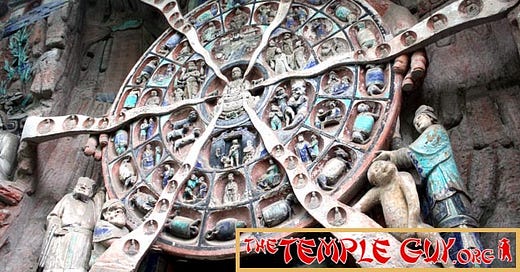Ep. 065: Friday Photo Essay: The Bigfoot Grottoes
Two sites of Buddhist carvings outside of Chongqing, China
When people rank the best Buddhist grottoes in China, the sites around Dazu always just squeak in last on the list. Yet for my money, they're among the best. See if you agree in this Friday Photo Essay episode of
TEMPLE TALES!




